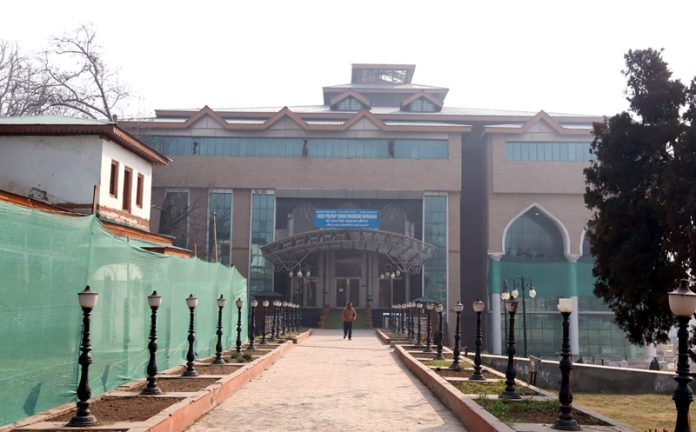Standing sentinel to over 5000 years of Kashmiri history, the Shri Pratap Singh (SPS) Museum in Srinagar holds untold stories within its walls. Yet, five years after its inauguration, a veil of incompleteness shrouds its uppermost floors, leaving treasures in the shadows and yearning for the spotlight. Like a half-told tale, the SPS Museum awaits its final chapter, one that promises to unfold the cultural and historical grandeur of Kashmir for all to witness. Three floors are currently completed, brimming with galleries that whisper of archaeology, numismatics, decorative art, and the clang of ancient armour. But two floors with six galleries remain tucked away, each a potential portal to unseen wonders.
Crucially, Kashmir harbours a historical tapestry woven over thousands of years, an ancient civilization that has the potential to captivate and mesmerise tourists. The Department of Achieves, Archaeology, and Museum, armed with a treasure trove of archives and materials, envisions the SPS Museum as a mega-tourist attraction, a beacon elucidating the historical significance of the region. With a rich history spanning early kings, the Mughal era, and centuries of Dogra rule, the current half-finished structure of three floors barely scratches the surface of the SPS Museum’s vast potential. Tourists, brimming with enthusiasm, are met with a disheartening reality: an incomplete museum that fails to leave the desired impact. At a time when Kashmir is poised as a world event centre, with Srinagar City designated as a part of the UNESCO Creative Cities Network, there is no room for such glaring lapses in project completion.
The incomplete story, however, has a glimmer of hope. A Government committee, led by the engineer-in-chief and comprising experts from various departments, has been formed to bridge the gap between dreams and reality. The mission is to unlock the treasures hidden within the museum’s upper sanctums. Tourists and locals yearn to unravel the history that hangs tantalisingly within reach, yet incomplete. The SPS Museum is not just bricks and mortar. It is a living narrative, a tapestry woven with the threads of time. Each unfinished floor represents a missing voice, a chapter left unread. Completing the museum is not just a construction project; it is an act of cultural preservation, a promise to future generations that their heritage will be cherished and showcased.
The incomplete SPS Museum stands as a glaring exemplar of egregious mismanagement, where the grandiosity of conception clashes with the abysmal execution by executive agencies. Despite the injection of staggering funds to the tune of Rs 72.40 crore by the Government, the behemoth project has metamorphosed into a chaotic spectacle. A partially completed complex stands inaugurated while the remaining portion languishes in a perpetual state of incompleteness. A period of 11 years in construction, followed by an additional 5 years since its inauguration, is still inadequate for the completion of a museum. The committee will get the museum completed, yet it must be accompanied by an unyielding probe into the Rs 72.40 crore allocated to the J&K Housing Corporation. Questions loom large over the full disbursement of funds, given the stark incongruity between financial allocations and the museum’s incomplete status. Accountability must be enforced, and mechanisms must be initiated to recover the misappropriated funds. This instance of executive failure is not an isolated one; unless stringent measures are taken, it is unlikely to be the last.
The Department of Archives, Archaeology, and Museums, endowed with a trove of invaluable material, finds itself hampered by the inability of the supposed infrastructure provider to deliver. A time-bound imperative now confronts us, as protracted delays not only erode momentum but also contribute to cost escalation, rendering compensation an arduous task. Sufficient time has elapsed; hence, the paramount objective should be the swift completion of the lingering portions, followed by the seamless handover to the concerned department for the museum’s full functionality.
Trending Now
E-Paper


